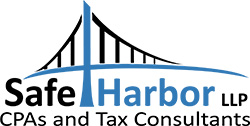May 20, 2013
By Robert Salazar, CPA – Tax Alliance Group, LLP
Robert Salazar, CPA, is the founder and president of The Alliance Group (TAG), a tax advisory firm specializing in Federal & State tax credits. TAG’s niche expertise regularly benefits business leaders in many industries including aerospace, pharmaceutical, manufacturing, software development, and telecommunications. Under Robert’s leadership, TAG identifies millions of dollars in tax savings for their clients each year.
Mr. Salazar is a graduate of California State University, Fresno, where he earned a B.S. in Accounting before becoming a licensed CPA. With over 20 years of experience he has provided tax and accounting services with the California Franchise Tax Board (FTB), as well as, The Big 4 accounting firms; PricewaterhouseCoopers LLP, and KPMG.
Past Professional Experience:
- KPMG – Practice Leader, Western US
- PricewaterhouseCoopers, LLP (PwC) – Professional
- Franchise Tax Board (FTB) – Auditor
Article Summary:

Introduction: California Tax Savings Available to Businesses in Enterprise Zones
Banks and corporations doing business in California often overlook the tax incentives available to them for operating in an enterprise zone. Currently, there are 42 enterprise zones in California. Enterprise zones are geographic areas within which businesses are eligible for certain tax incentives. Those incentives are designed to stimulate business investment and translate into meaningful California tax savings opportunities. However, many businesses in enterprise zones are not taking full advantage of the incentives available to them. Some businesses find the incentive requirements too burdensome or intrusive to satisfy, while others are tripped up by regulatory policies. This article highlights three pro- business incentives available to banks and corporations operating in a California enterprise zone and focuses on how those businesses can pursue these three opportunities.
Three Enterprise Zones
The three enterprise zone incentives discussed in this article are the enterprise zone sales or use tax credit, the enterprise zone hiring credit, and the enterprise zone net interest deduction. Because each of these incentives targets a different function performed by a business, the incentives offer businesses a wide range of benefits. For example, the hiring credit encourages businesses to hire certain employees while the sales or use tax credit encourages businesses to purchase qualified equipment or machinery. Similarly, the net interest deduction encourages businesses to invest in enterprise zone businesses. The net result is three independent incentives that provide banks or corporations an opportunity to reduce their California income tax exposure.
Because the incentives are not dependent on each other, a bank or corporation can use one of the incentives or all three. This is significant because a taxpayer can independently plan in different areas without having to worry about one area disqualifying another area. Moreover, with some forward planning, taxpayers can avoid going to great lengths to create or obtain additional documentation before claiming the incentives. As an analysis of the enterprise zone sales or use tax credit illustrates, most of the documentation a taxpayer needs to take advantage of the incentives can be created during the normal course of the taxpayer’s business. These incentives are retroactive up to four years, allowing you to amend past filings and recapture Income Tax payments to the state.
Next: The Enterprise Zone Sales or Use Tax Credit
- Click here to read the next article in this series.

